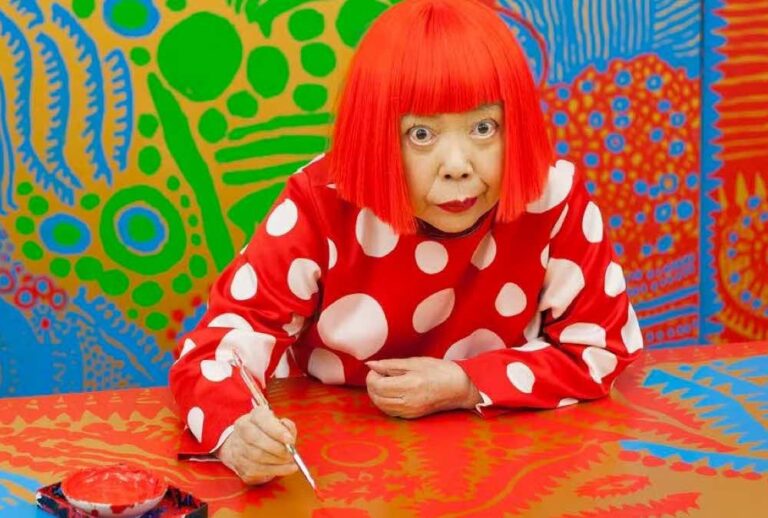Ask five different people what comes to mind when they think of Japanese art and chances are you’ll get five different responses.
While Edo period woodblock prints might spring to mind for the traditionally inclined, it could be modern anime-inspired designs of Takashi Murakami for the more contemporary minded. With a history spanning over 14 centuries, at various times eschewing and embracing Western influence, Japanese art and those who produce it have become some of the most recognisable and influential in the world.
Made and canned in Japan, Monsutā’s lineup of drinks combine bold flavours with bold Japanese-inspired designs. Winning the coveted title of Japan’s Best International Lager in 2022, and recently launching a range of alcoholic lemon, mango, and pineapple chūhai’s, the bold artwork of Monsutā’s cans has become as iconic as the drinks themselves. We’ve teamed up with Monsutā to bring you some of our favourite influential Japanese artists.
Katsushika Hokusai
Although he adopted at least 30 different pen names throughout different phases of his career, Hokusai is the name that most people will recognise as the one behind some of Japan’s most iconic Edo period artworks. Most known for The Great Wave off Kanagawa, Hokusai’s output was constant and varied.
Said to have created over 30,000 works over his 88 years of life, in addition to Ukiyo-e style painting he also dabbled in picture books, illustrations, historical novels, and woodblock prints. Expelled from his school for incorporating Dutch and French carving styles into his work during Japan’s isolationist period, the artist took Japan’s Ukiyo-e style to new levels and, despite not reaching prominence until much later in his life, is now one of the names most synonymous with Japanese art.

Yasumasa Morimura
Primarily working as a photographer and filmmaker, Yasumasa Morimura’s technical skills across traditional and modern mediums have made him one of Japan’s most respected contemporary artists for over three decades. Making use of paint, costumes, photography, and digital editing, Morimura rose to prominence with a series of self-portraits based on well-known works by artists like Frida Kahlo and Vincent van Gogh.
The works, which often see Morimura transform himself into figures from art and popular culture, have been noted for their exploration of identity malleability and American influence on Japanese culture. Still based in Osaka, Morimura has recently held major solo exhibitions at galleries like Luhring Augustine Gallery in New York and continues to influence international art, challenging our perceptions of identity.

Yayoi Kusama
Coming up to her 95th birthday, Yayoi Kusama’s polka dots, pumpkins, and infinity nets have become some of the most inspirational artworks of the last six decades. Growing up in rural Japan, Kusama experienced vivid hallucinations from a young age. These hallucinations, often featuring flowers, dots, and nets, inspired many of the designs she’s become known for, as well as themes of repetition, obsession, and infinity.
She gained critical notoriety during her time in New York from the late 50s to early 70s, establishing herself in the avant-garde art scene before returning to Japan in 1973. Shortly after her return, she voluntarily admitted herself to a psychiatric facility where she still lives today. Shunned by the Japanese scene and largely forgotten by New York, she virtually kick-started her career again from scratch and was named one of Time’s most influential people in 2017 and completed her second collaboration with Louis Vuitton in 2023.

Takashi Murakami
Combining elements of traditional Japanese visual art with modern anime and manga influences, Takashi Murakami’s use of bold colours and kawaii, often satirical imagery across a range of mediums has become one of the most defining Japanese art styles of the 21st century. Born and raised in Tokyo and earning a Ph.D. in Nihonga, a style of Japanese painting that incorporates traditional materials and techniques, Murakami’s dissatisfaction with contemporary art in the 90s led him to develop Superflat, the distinctive style and artistic philosophy he’s become known for.

Referring not just to the visual elements of his work, Superflat also describes Murakami’s approach to his art, often blurring the lines between what is considered high and low art and challenging conventional notions of artistic elitism. Murakami’s numerous large-scale exhibitions and high-profile brand collaborations helped to repopularize Japanese art internationally since the early 21st century.
Monsutā alcoholic beverages are available at BWS, Dan Murphy’s, and Jimmy Brings.




































